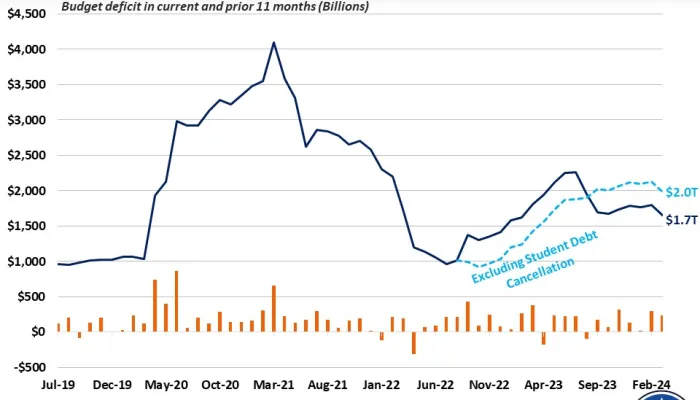CRFB's Analysis of the FY 2015 President's Budget
The President's budget is here, and so is CRFB's analysis. Our paper breaks down the key budget metrics, the policies the President uses to get there, and the economic assumptions that underlie the document. You can read the full analysis here.
The budget has debt on a downward path, falling from a peak of 75 percent of GDP in 2015 to 69 percent by 2024. Deficits fall from 4 percent in 2013 to 2 percent by 2017 and remain around that level for the rest of the ten-year window. Deficits decline as revenue rises significantly as a percent of GDP, faster than does spending (which is increasing basically throughout the ten-year window).
While the budget does not include the chained CPI like it did last year, it does keep a number of health reforms and revenue increases which represent the bulk of the budget's deficit reduction. Another major savings component is the passage of immigration reform, a new inclusion in the President's budget. The budget also includes a number of initiatives, such as effectively doubling the Earned Income Tax Credit for childless workers and funding universal pre-school, and has dedicated offsets to pay for them.
Fiscal Impact of Proposals in the President's Budget
One major difference between OMB and CBO is in their economic assumptions. OMB's economic assumptions have real GDP growth on average 0.2 percent higher annually than CBO, resulting in real GDP more than 2 percent higher in 2024. In addition, OMB projects the unemployment rate to fall faster and to a lower level than CBO. Because of these differences, we are concerned that the budget projections might not hold up when CBO evaluates the budget.
Overall, the President's budget has some merits but also some pitfalls. It proposes new initiatives along with offsetting savings and includes further savings to reduce the deficit. On paper, it puts the debt on a downward path. However, we are concerned that the deficit projections may be buoyed by OMB's rosy economic assumptions; using CBO's economic projections may show a higher deficits. Furthermore, the removal of the chained CPI – when the budget could have used more entitlement reforms, not fewer – is concerning given the dire state of the long-term fiscal situation. Still, the budget would represent progress on deficit reduction, even if it does not go far enough.
Click here to read the full paper.


